Themed collection Crystal engineering for molecular materials

Transforming metal–organic frameworks into functional materials
Transformation of metal–organic frameworks as a way to improve properties and design better materials is reported.
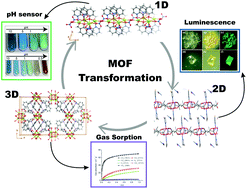
Inorg. Chem. Front., 2015,2, 495-509
https://doi.org/10.1039/C4QI00222A
Topology analysis of metal–organic frameworks based on metal–organic polyhedra as secondary or tertiary building units
MOFs of complicated topologies can be analyzed as networks having simple underlying topologies when the MOPs are considered as TBUs.
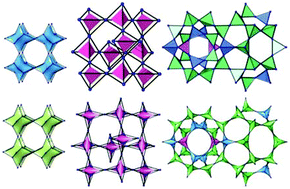
Inorg. Chem. Front., 2015,2, 336-360
https://doi.org/10.1039/C4QI00236A
From solid-state metal alkoxides to nanostructured oxides: a precursor-directed synthetic route to functional inorganic nanomaterials
This review summarizes the construction of nanostructured solid-state metal alkoxides and their conversion into functional inorganic nanomaterials.
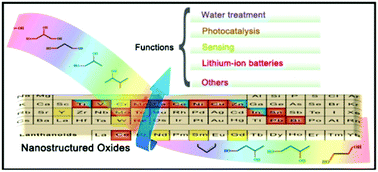
Inorg. Chem. Front., 2015,2, 198-212
https://doi.org/10.1039/C4QI00191E
Designing the syntheses and photophysical simulations of noncentrosymmetric compounds
The designs of NCS compounds based on the normal development of NCS chromophores are presented and NLO properties are investigated.

Inorg. Chem. Front., 2015,2, 95-107
https://doi.org/10.1039/C4QI00156G
Magnetic clusters based on octacyanidometallates
A complete review of all known octacyanide-based clusters with an extensive discussion of their structures, magnetic properties and multifunctionality.

Inorg. Chem. Front., 2015,2, 10-27
https://doi.org/10.1039/C4QI00189C
New tricopper(II) cores self-assembled from aminoalcohol biobuffers and homophthalic acid: synthesis, structural and topological features, magnetic properties and mild catalytic oxidation of cyclic and linear C5–C8 alkanes
Two new compounds with distinct tricopper(II) cores were synthesised and applied as bio-inspired pre-catalysts for mild oxidation of alkanes.
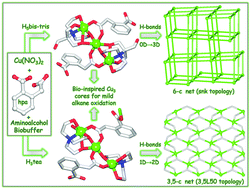
Inorg. Chem. Front., 2015,2, 525-537
https://doi.org/10.1039/C4QI00220B
Synthesis, luminescence and electrochemical properties of luminescent dinuclear mixed-valence gold complexes with alkynyl bridges
A series of luminescent dinuclear mixed-valence gold alkynyl complexes was synthesized. Their photophysical properties can be tuned by varying the nature of the alkynyl bridges, as supported by computational studies.
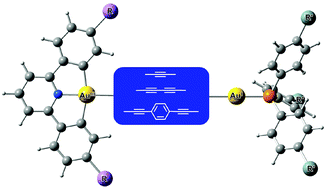
Inorg. Chem. Front., 2015,2, 453-466
https://doi.org/10.1039/C5QI00017C
Control of pore distribution of porous carbons derived from Mg2+ porous coordination polymers
Control of pore distribution of porous carbons from porous coordination polymers.
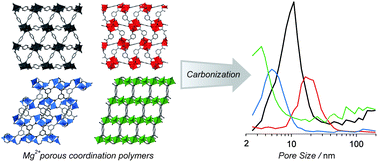
Inorg. Chem. Front., 2015,2, 473-476
https://doi.org/10.1039/C5QI00019J
Amide-containing zinc(II) metal–organic layered networks: a structure–CO2 capture relationship
An intimate interrelationship between the structural characteristics and their CO2 adsorption behavior has been demonstrated in this study.

Inorg. Chem. Front., 2015,2, 477-484
https://doi.org/10.1039/C4QI00241E
Positioning of the HKUST-1 metal–organic framework (Cu3(BTC)2) through conversion from insoluble Cu-based precursors
A Cu-based metal–organic framework (HKUST-1) was synthesized from insoluble precursors and positioned using sol–gel based coatings.
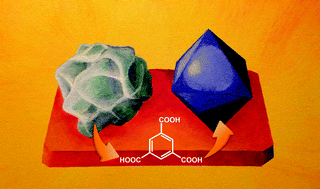
Inorg. Chem. Front., 2015,2, 434-441
https://doi.org/10.1039/C4QI00215F
Pt@ZIF-8 composite for the regioselective hydrogenation of terminal unsaturations in 1,3-dienes and alkynes
Size and regioselective catalysis in a Pt@ZIF-8 composite.
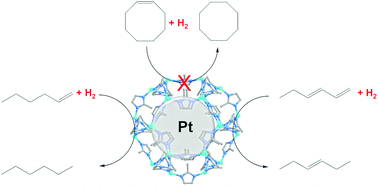
Inorg. Chem. Front., 2015,2, 448-452
https://doi.org/10.1039/C5QI00010F
Guest dependent reversible single-crystal to single-crystal structural transformation in a flexible Gd(III)-coordination polymer
We describe a 3D flexible Gd(III)-coordination polymer, constructed from a linear carboxylate ligand, which shows reversible single-crystal to single-crystal “guest-responsive fitting” of the channels and carboxylate shift process, upon inclusion of aldehyde guests.
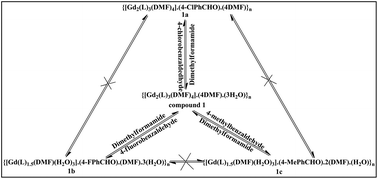
Inorg. Chem. Front., 2015,2, 395-402
https://doi.org/10.1039/C4QI00193A
A two-dimensional flexible porous coordination polymer based on Co(II) and terpyridyl phosphine oxide
A 2D framework with –P(O)Ph2 phenyl groups on the layer surface has been obtained, which shows remarkable dynamic sorption behaviours.

Inorg. Chem. Front., 2015,2, 388-394
https://doi.org/10.1039/C4QI00138A
Macroscopic polarity control with alkali metal cation size and coordination environment in a series of tin iodates
The IO3 groups in Na2Sn(IO3)6 are aligned in a parallel manner attributed to the six-coordinate Na+ cation, whereas the IO3 polyhedra in Cs2Sn(IO3)6 rotate with respect to Sn4+ due to the nine-coordinate Cs+ cation.
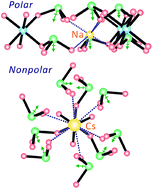
Inorg. Chem. Front., 2015,2, 361-368
https://doi.org/10.1039/C4QI00243A
Open metal sites dangled on cobalt trigonal prismatic clusters within porous MOF for CO2 capture
A porous MOF adapting a rare SBU with open metal sites dangled on cobalt trigonal prismatic clusters has been constructed based upon a custom-designed octacarboxylate ligand.
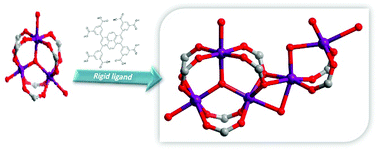
Inorg. Chem. Front., 2015,2, 369-372
https://doi.org/10.1039/C4QI00240G
Reconciling order, stability, and porosity in phosphonate metal–organic frameworks via HF-mediated synthesis
We report the use of an HF-mediated synthesis to control porosity and order in robust Zr phosphonate frameworks.
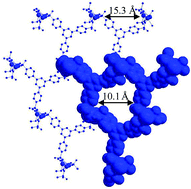
Inorg. Chem. Front., 2015,2, 273-277
https://doi.org/10.1039/C4QI00209A
Structural studies and detection of nitroaromatics by luminescent 2D coordination polymers with angular dicarboxylate ligands
The solvothermal synthesis and crystal structures of 2D coordination polymers involving an SDB linker with Cd(II)/Zn(II) nodes, and the luminescence properties of these activated compounds for the detection of nitroaromatics, have been investigated.
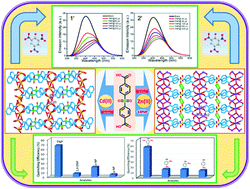
Inorg. Chem. Front., 2015,2, 228-236
https://doi.org/10.1039/C4QI00175C
1D chains, 2D networks and 3D interdigitated frameworks of isoorotic acid or 4,4′-bipyridyl and isoorotic acid: syntheses, structures, and sorption properties
Five new coordination polymers, from 1D chains to a 2D sheet and finally 3D porous frameworks, have been synthesized with different transition metals. The 3D interdigitated framework of Ni(II) is explored further for stepwise CO2 and C2H2 storage.
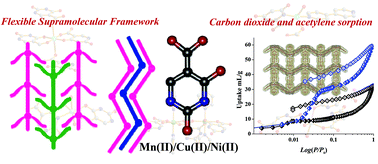
Inorg. Chem. Front., 2015,2, 278-289
https://doi.org/10.1039/C4QI00129J
Organic melt, electride, and CVD induced in situ deposition of luminescent lanthanide imidazolate MOFs on nanostructured alumina
Highly luminescent MOF coatings were grown on nanostructured alumina membranes via melt, electride and CVD approaches.
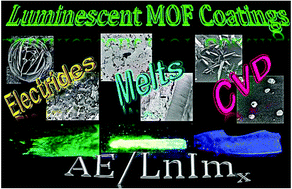
Inorg. Chem. Front., 2015,2, 237-245
https://doi.org/10.1039/C4QI00184B
Combining coordination and supramolecular chemistry to explore uranyl assembly in the solid state
Supramolecular assembly of uranyl species via halogen–oxo and halogen–halogen interactions is explored in the solid state.

Inorg. Chem. Front., 2015,2, 141-156
https://doi.org/10.1039/C4QI00183D
Syntheses, structures and gas sorption properties of two coordination polymers with a unique type of supramolecular isomerism
Two genuine supramolecular isomers with a unique type of structural difference and completely different porous properties have been synthesized and characterized.
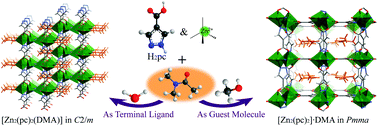
Inorg. Chem. Front., 2015,2, 136-140
https://doi.org/10.1039/C4QI00190G
A metal–organic framework as a highly efficient and reusable catalyst for the solvent-free 1,3-dipolar cycloaddition of organic azides to alkynes
A new highly efficient and reusable Cu-MOF has been developed for the regioselective synthesis of 1,2,3-triazoles via the 1,3-dipolar cycloaddition of organic azides to terminal alkynes under solvent-free conditions.
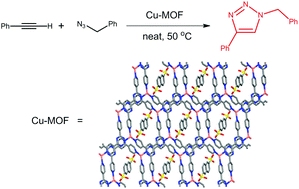
Inorg. Chem. Front., 2015,2, 42-46
https://doi.org/10.1039/C4QI00148F
A series of novel mercury(I) selenites and tellurites containing SOJT Mo6+ cations
New mercury(I) selenites and tellurites Hg2MoSeO6, α-Hg2MoTeO6, β-Hg2MoTeO6, and Hg2Mo2TeO9 with novel structures have been obtained by hydrothermal reactions.
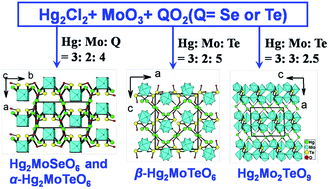
Inorg. Chem. Front., 2014,1, 761-768
https://doi.org/10.1039/C4QI00132J
Synthesis, structures, and magnetic properties of a series of new heterometallic hexanuclear Co2Ln4 (Ln = Eu, Gd, Tb and Dy) clusters
A series of new Co–Ln heterometallic molecule-based magnetic materials were synthesized and characterized. The magnetic investigation indicates that the Co–Gd complex exhibits a large MCE of 24.87 J kg−1 K−1 while the Co–Dy complex shows a magnetic relaxation.
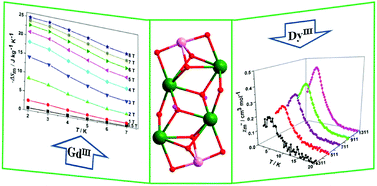
Inorg. Chem. Front., 2014,1, 695-704
https://doi.org/10.1039/C4QI00116H
In situ synthesis and structural characterization of a series of acylhydrazidate-extended Ln3+ and Zn2+ coordination polymers
By utilizing the hydrothermal acylation of N2H4 with aromatic polycarboxylic acids, a series of acylhydrazidate-extended two-dimensional or three-dimensional coordination polymers were isolated. Photoluminescence analysis revealed that these compounds emitted light at different wavelengths depending on their structures.
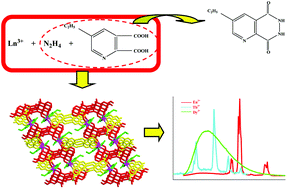
Inorg. Chem. Front., 2014,1, 673-681
https://doi.org/10.1039/C4QI00100A
Towards multicomponent MOFs via solvent-free synthesis under conventional oven and microwave assisted heating
Solvent-free synthesis under conventional oven and microwave assisted heating to provide multicomponent MOFs.

Inorg. Chem. Front., 2015,2, 425-433
https://doi.org/10.1039/C4QI00208C
Tailoring functionality through synthetic strategy in heterolanthanide assemblies
Three classes of heterolanthanide assemblies, multi-dimensional frameworks (A), discrete polynuclear molecules (B) and preformed coordinated units connected by a linker (C), are discussed. Potential functionalities arising from the distance-dependent coexistence or interplay of the physical properties are pointed out.
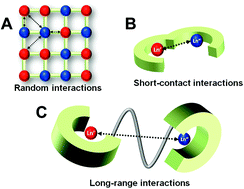
Inorg. Chem. Front., 2015,2, 213-222
https://doi.org/10.1039/C4QI00188E
Tailoring magnetic properties of molecular materials through non-covalent interactions
This Chemistry Frontier highlights how supramolecular non-covalent interactions can be employed as effective tools in tailoring the magnetic properties of crystalline functional molecular materials.
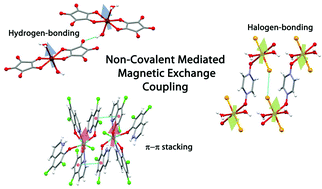
Inorg. Chem. Front., 2015,2, 108-115
https://doi.org/10.1039/C4QI00179F
About this collection
Crystal engineering, as the art of design and synthesis of functional solid-state structures, strongly benefits the development of molecular materials on the aspect of structure construction and optimization for interesting properties. This themed collection of Inorganic Chemistry Frontiers is bringing together these two topics by concentrating recent efforts on either theoretical or experimental research in this interdisciplinary area.
The Guest Editors for this themed collection are:
Xiao-Ming Chen (Sun Yat-Sen University)
Masahiro Yamashita (Tohoku University)
Wenbin Lin (University of Chicago)